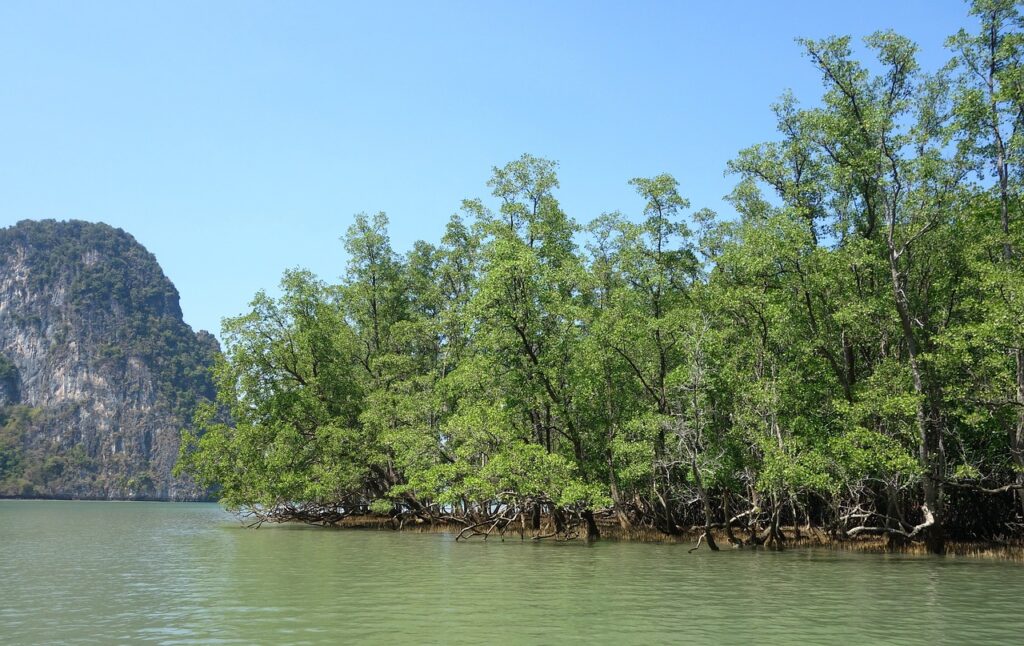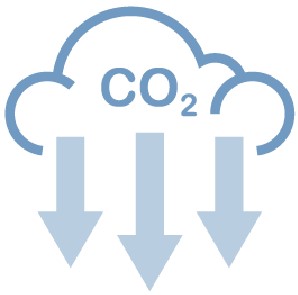Carbon Footprint of Tourism
How Travel is Contributing to the Climate Emergency
Tourism is responsible for roughly 8% of the world’s carbon emissions. From plane flights and boat rides to souvenirs and lodging, various activities contribute to tourism’s carbon footprint. The majority of this footprint is emitted by visitors from high-income countries, with U.S. travelers at the top of the list. As the number of people who can afford to travel grows, so will tourism’s environmental footprint. Keep reading to learn about some of the different ways that travel produces CO2.
Carbon Footprint of Global Tourism

Transport
Getting from here to there is the most basic component of tourism. Planes, cars, trains, boats, and even hot air balloons allow us to explore destinations all around the world. However, all of our jet-setting and road-tripping comes with a hefty carbon footprint. Today, transportation is tourism’s main source of greenhouse gas emissions. On average, planes and cars generate the most CO2 per passenger mile, with tour buses, ferries, and trains coming well behind. In recent years, the number of people traveling internationally skyrocketed as airfare became more affordable. Similarly, between 2005 and 2016, transport-related tourism emissions increased by more than 60%.

Lodging
In the same way your house generates emissions from energy use, so do the hotels, homestays, and rental homes that you stay in while on vacation. Many accommodations rely on heating and air conditioning to keep guest rooms at a pleasant temperature in hot or cold climates. These energy-intensive systems create CO2, as do the water heaters used to warm showers, pools, and spas. Electricity used to power lights, TVs, refrigerators, laundry machines, and other equipment is also a big contributor, especially in areas with dated or inefficient systems.
Emissions from lodging tend to be highest in resorts and hotels that offer modern services, while smaller lodgings such as homestays and guest houses have lower emissions for the most part.
Average Energy Use in Hotels in Uganda

While hotels can lessen their footprint by utilizing clean energy sources, most still depend on dirty fossil fuels for the majority of their energy. According to the 2022 Green Lodging Trends Report, only 27.4% of hotels currently have on-site renewable energy.
Construction
Resorts, airports, and other tourism facilities can produce massive amounts of carbon even before they open their doors to tourists. Constructing a new building is an energy-intensive process – manufacturing the materials, transporting everything to the site, and constructing the building all generate carbon emissions. And it’s not just buildings that leave behind a footprint – the development of roads and other infrastructure for tourism also contributes to climate change.
Destruction of Carbon Sinks
Along with the construction process, tourism development emits carbon through the clearing of natural areas. Ecosystems, such as forests, act as carbon sinks by absorbing and storing emissions. When this carbon-rich vegetation is removed, CO2 is released back into the atmosphere.
The mangrove forests that grow along coastlines in many tropical destinations have a tremendous capacity to store carbon. Studies show that they can store up to 4 times more carbon than most other tropical forests around the world. Sadly, vast areas of mangroves are often cleared to make way for tourist infrastructure such as seaside resorts, beaches, marinas, and entertainment areas.

The world lost a football field-sized area of tropical forest every five seconds in 2019, causing the same amount of carbon emissions that 400 million cars would produce over an entire year.
Food & Drink
Food production is responsible for roughly one-quarter of the world’s greenhouse gas emissions. Getting food from farm to table means growing, processing, transporting, packaging, refrigerating, and cooking – all of which require energy and contribute to your meal’s carbon footprint. Travel often multiplies this footprint since people tend to indulge more while on vacation.
Imports
To cater to visitor tastes, many hotels and restaurants import the majority of their food products from other countries. Remote island destinations are especially dependent on imports. The farther food travels, the more emissions are generated – and to get food to these secluded islands, it has to travel a very long way.
Food Waste
Thanks to all-you-can eat hotel buffets and oversized restaurant portions, a substantial amount of the food produced for tourism ends up getting thrown away. When food is wasted, this means that all of those emissions that were generated by its production were unnecessary. Globally, less than half of hotels compost their food waste. When this food decomposes in landfills it creates methane which is 21 times more potent than carbon dioxide.
Food Waste in Hotels in Uganda

Wastage of food in tourism is part of a larger, global issue. In fact, if food waste were a country, it would be the world’s 3rd largest emitter of CO2.
In Uganda, travelers often take home local crafts like beaded necklaces, baskets, and hand-carved wooden souvenirs to remember their trip. Shopping has become an integral part of the travel experience, with bustling markets and high-end boutiques offering a wide range of products.
While buying souvenirs, it is important to consider the environmental impact and carbon footprint of the items. The production, manufacturing, and shipping of the product all contribute to its overall impact. By purchasing locally made products, travelers can support the local economy and reduce the carbon emissions associated with long-distance transportation.
However, it is important to note that production emissions can still be high if travelers’ buying habits differ from those of the locals. Therefore, travelers are encouraged to make educated and sustainable purchasing decisions.

Going Forward . . .
The impacts of climate change have made it more important than ever for local governments, tourism businesses, and suppliers, as well as individual travelers, to take action in reducing the industry’s reliance on fossil fuels.
New technologies such as solar-powered water heaters, temperature control systems, and energy-saving appliances have allowed the industry to lessen its carbon footprint, but these innovations are still not enough to offset the emissions created by a growing number of travelers.
Projections indicate that tourism emissions could reach 6.5 billion metric tons by 2025- which represents a 44% increase from 2013 and is equivalent to about 13% of current global greenhouse gas emissions. In light of this, carbon offsetting should be used to complement sustainability practices and reduce tourism’s carbon footprint wherever possible.
What You can Do

Calculate
Use an online calculator to determine the amount of emissions generated by your travels.
Reduce
Lessen the carbon footprint of your next trip by adopting these sustainable travel practices
Offset…
Your carbon footprint by supporting forestry or energy projects that reduce CO2 and benefit communities


